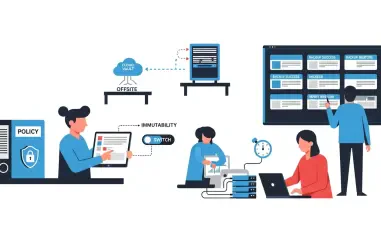The modern technological landscape is increasingly under threat due to firmware vulnerabilities, which compromise a wide variety of systems, from routers to critical infrastructure. With unprecedented increases in cyber threats, organizations must address firmware vulnerabilities to ensure systems remain secure against potential breaches. This review explores effective methods and the larger implications of such vulnerabilities to guide better protections.
Understanding the Nature and Impact
Firmware vulnerabilities stem from flaws in the embedded software of devices, often leading to significant security lapses. These vulnerabilities allow attackers to exploit systems, gaining unauthorized access and control. Such breaches compromise the security of critical operations, potentially causing wide-ranging disruptions.
The impact can be catastrophic, especially when malicious actors exploit embedded devices integral to everyday operations. From healthcare equipment to financial transaction systems, any connected device with outdated or flawed firmware becomes a potential target, underlining the vulnerabilities’ profound implications. The escalating risks necessitate prompt and efficient countermeasures in safeguarding technological infrastructures.
Essential Mitigation Strategies
Role of Firmware Updates and Patching
Regular firmware updates and patching remain foundational in addressing vulnerabilities. Keeping system firmware current reduces vulnerabilities and the likelihood of successful attacks. However, executing patches introduces challenges, requiring coordination across multi-vendor environments and often causing operational downtime.
The efficacy of updates lies in their timely deployment, yet organizations frequently struggle with ensuring patches are both comprehensive and seamless. Effective decision-making on update timing and scope is crucial to maintain security without significant disruption, all while navigating logistical and operational barriers.
Importance of Secure Boot Mechanisms
Secure boot mechanisms play a pivotal role in verifying firmware integrity before system execution. By ensuring only authorized software is loaded, secure boot prevents the injection of malicious code, safeguarding systems. Nonetheless, implementing secure boot can encounter difficulties such as compatibility issues with existing systems and the need for sophisticated authentication protocols.
Although real-world application can prove complex, secure boot remains integral for organizations aiming to preserve confidentiality and system integrity against evolving threats. Institutions must continually assess and refine these mechanisms to fortify defenses effectively.
Emerging Trends and Technological Advancements
Automation and AI are reshaping the firmware security landscape, introducing intelligent threat detection and response strategies. Automation streamlines patch deployment, ensuring comprehensive coverage and minimizing human error. Meanwhile, AI enables predictive analytics for identifying potential vulnerabilities before they are exploited.
Industry practices increasingly lean toward adopting these innovations, benefiting from enhanced efficiency and precision. New tools and methodologies continue to emerge, increasingly influencing cybersecurity strategies against a backdrop of growing cyber threats and technology evolution.
Applications Across Diverse Sectors
Firmware vulnerability mitigation is integral in sectors like healthcare, finance, and critical infrastructure. In healthcare, maintaining the integrity of firmware in medical devices is paramount to ensuring patient safety and data protection. Financial institutions use these strategies to protect transaction systems, preventing unauthorized access and data breaches.
Critical infrastructure relies on robust mitigation strategies to deter potential disruptions, illustrating successful implementations through improved cybersecurity measures. Case studies across these sectors highlight the transformative potential of well-executed mitigation strategies.
Challenges and Overcoming Limitations
Organizations face ongoing challenges, including resource constraints, compliance with regulatory requirements, and complexity in implementation. These challenges hinder efforts to secure firmware comprehensively across varied systems and environments.
To overcome such limitations, advancements in technology and strategic collaboration become essential. Stakeholders work on developing streamlined frameworks and investing in resources to bolster defenses, responding dynamically to these ever-present challenges.
Visualizing the Future of Firmware Mitigation
Advancements in technology promise significant strides in firmware vulnerability mitigation, with potential breakthroughs in cryptographic security and real-time threat intelligence anticipated. The future portends enhanced tools and processes designed to preempt vulnerabilities, building a more resilient technological ecosystem.
Expected developments indicate a marked shift toward more integrated and adaptable security frameworks, essential in fortifying systems against sophisticated cyber threats. These efforts pave the way for safeguarding assets and data, reinforcing confidence in cybersecurity infrastructures.
Final Thoughts
Throughout this review, key insights reveal the urgent need for effective firmware vulnerability mitigation strategies. While current methodologies provide substantial defenses, evolving threats demand adaptive and forward-thinking approaches to secure tomorrow’s technological landscape.













